Compressed air mining locomotives
Compressed air mining locomotives
|
This post was updated on .
A friend clued me in to a 3-D print offering on Shapeways:
https://www.shapeways.com/product/H6J7LTKJ9/ho-scale-40-5-quot-gauge-compressed-air-porter-0-4-0?li=marketplace&optionId=61730254 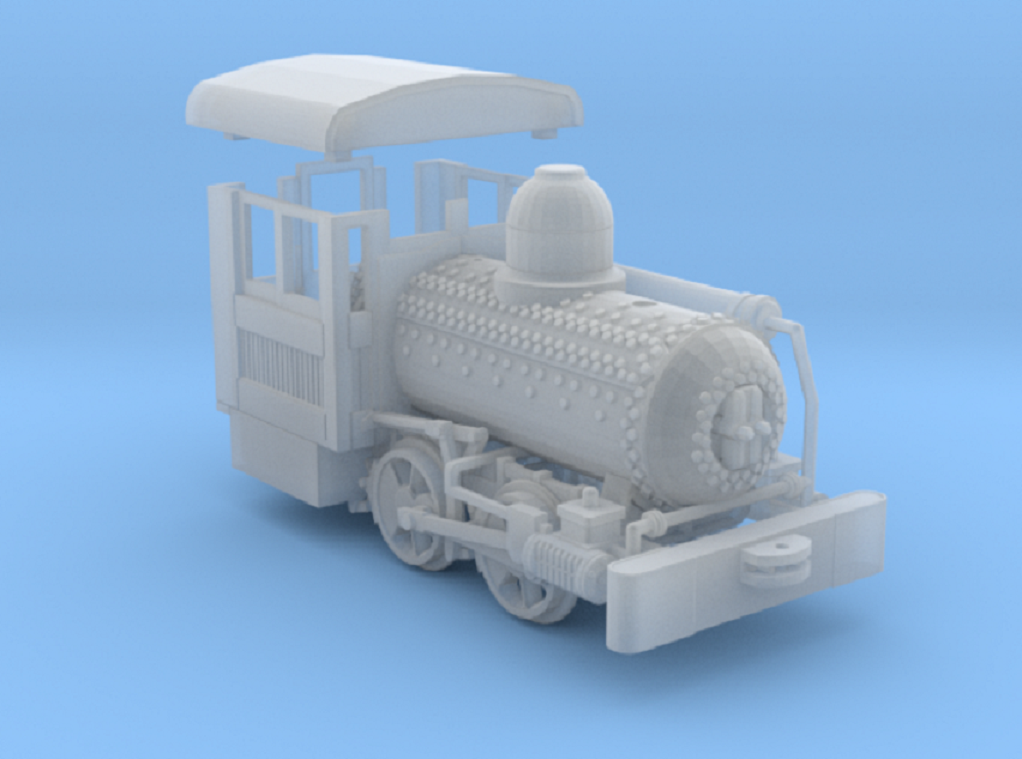 The listing states that it is an HO scale compressed air Porter of 40.5" gauge -- in S scale it would be about 30" gauge. It might be a starting point for a compressed air mining locomotive, from an era before electrification and diesel engines became commonplace. The enclosed cab would have to go. Questions for you Colorado mining connoisseurs: Is this little locomotive prototypical for any mining operation in Colorado? If the locomotive is powered by compressed air bottled up in that sturdy tank with all the rivets, what is the dome for?? How was the locomotive charged with compressed air? Any photos of Colorado mining locomotives that remotely resemble this little beast? Asking for a friend . . . 
Jim Courtney
Poulsbo, WA |
|
Jim I think there was an article on compressed air mining locos in an early Gazette. They were usually charged using the compressor that powered the air drills. I will have a look and see if I can find it. Paul R.
|
Re: Compressed air mining locomotives
|
In reply to this post by Jim Courtney
The dome us probably for sand like this one looks to be - just need to add the pipes to get it down to the wheels. I assume they were charged with a big air compressor, which could be electric motor or steam engine driven. |
Re: Compressed air mining locomotives
|
The Dome....as they didn't use sand on the Homestake, strictly modellers license! And the definitive Scott Zieske article is in the Mar/Apr 1984 NG&SL Gazette.
The Right Honorable Harry Brunk bailed me up at Colorado Springs NNGC back in '98 when I had my Homestake Air Motor there, as he had seen a Air-Motor in back of the Capital Prize mine in Georgetown that he wanted to (or had) modelled, he thought it looked different. He apparently combined a Porter chassis with the modern welded tank as he had no information at that time, other than Scott's article. Gratuitous picture of my Porter  The figure was sublimely sculptured by Joe Crea for me. The figure was sublimely sculptured by Joe Crea for me.
 The Porter air-motors weren't to my knowledge used in Colorado in the Hardrock mines, maybe in Coalmines, that I can't say. Different versions were used in Alberta in the coalmines there, and British Columbia metal mines at Silverton and Britannia Beach have them on display. Jim's "model" is of the 22" gauge surface tramway #9 used at the Homestake Mine in Lead, was on display at the Museum there. That version was recharged from the side, the smaller versions were charged from the backhead, by a double pivot pipe arrangement connected to the Mine air supply of 900-1200psi. Most mines in Colorado used Trolley overhead, see:http://c-sng-discussion-forum.41377.n7.nabble.com/Newhouse-Tunnel-Boilerhouse-Growth-And-Demise-tp1534p11545.html and later Storage Battery-Electrics after 1927>. Most Air-motors used in Colorado were of the modern low-pressure versions(Grandt-Line made the EIMCO version), from memory I think the first were developed at Cripple Creek by Tram-Air(e) in the early 1950's. One is still used on the Molly-Kathleen tour. 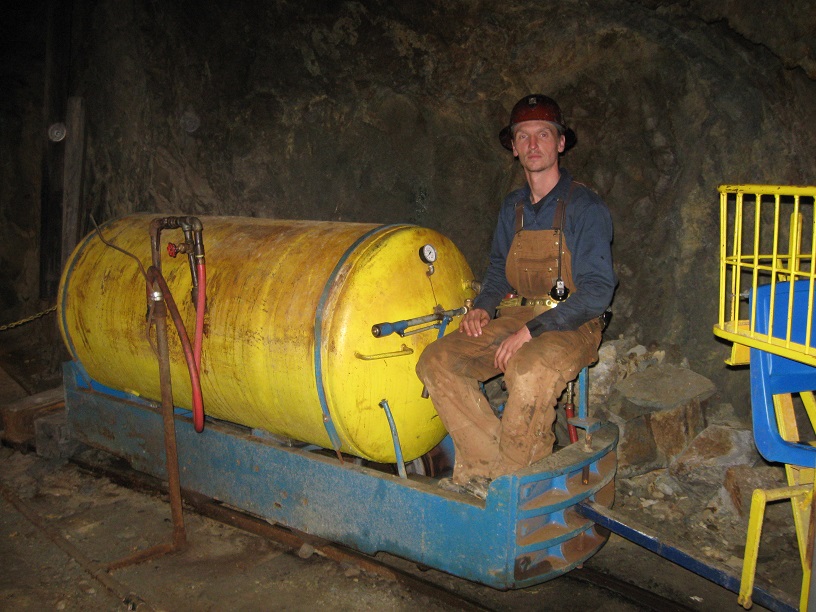 The Molly Kathleen also have another, the tourguide said it was homemade but it may be a Rix, has a lot of backhead pipe work missing so maybe not. 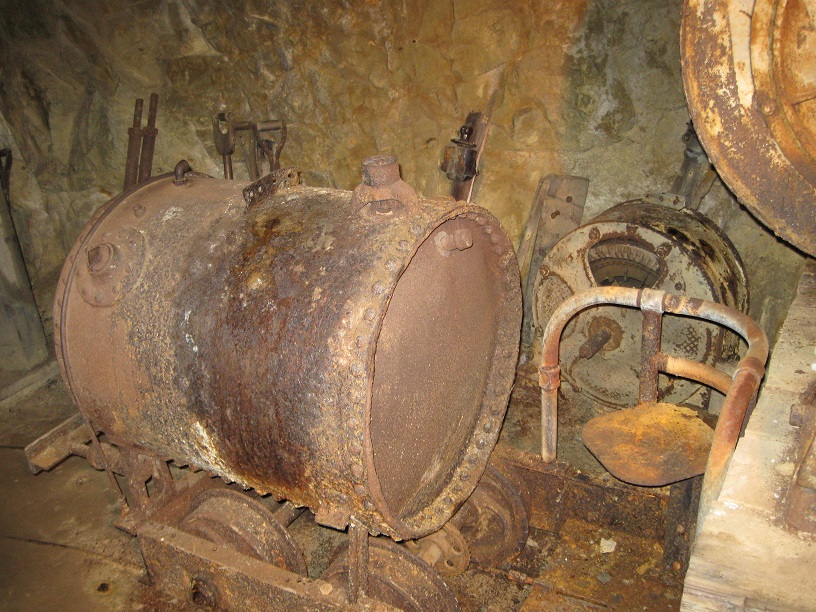
Silverton's museum has this on display, but in 1890, welded tanks could be a stretch   I have a number of pictures but they're all print format, if there is interest, I'll shoot those tomorrow.
UpSideDownC
in New Zealand |
Re: Compressed air mining locomotives
|
Fantastic Porter model, Chris. Love it!
|
Re: Compressed air mining locomotives
|
In reply to this post by Chris Walker
Wow, remove the books, photoshop a mine in the background, and I would believe it to be the real thing! Is it 1/2"?
|
Re: Compressed air mining locomotives
|
In reply to this post by Chris Walker
Thanks Chris,
I knew that I could count on you to further educate me! More photos? Yes please, especially any photos showing the "air-motors" in actual prototypical use. I've Google imaged quite a few of the existing display locos, but many seem to have things missing. And while you're at it, how about more photos of your gorgeous little Porter, both sides, ends, back head / controls. I'm sure all of us would like to see more. BTW, do you have one of these on your 1:1 home tram, or are you still 100% goat powered?
Jim Courtney
Poulsbo, WA |
Re: Compressed air mining locomotives
|
As promised....
Homestake #9 in the carpark at Lead S.D. Mining Museum. 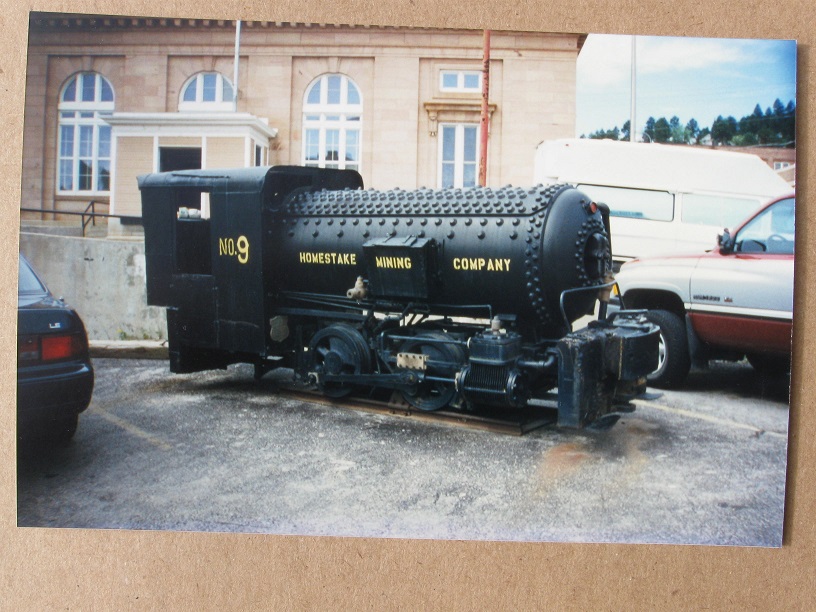 #9 at work   Homestake Mining short tank Porter at the Western Mining Museum Colorado Springs. 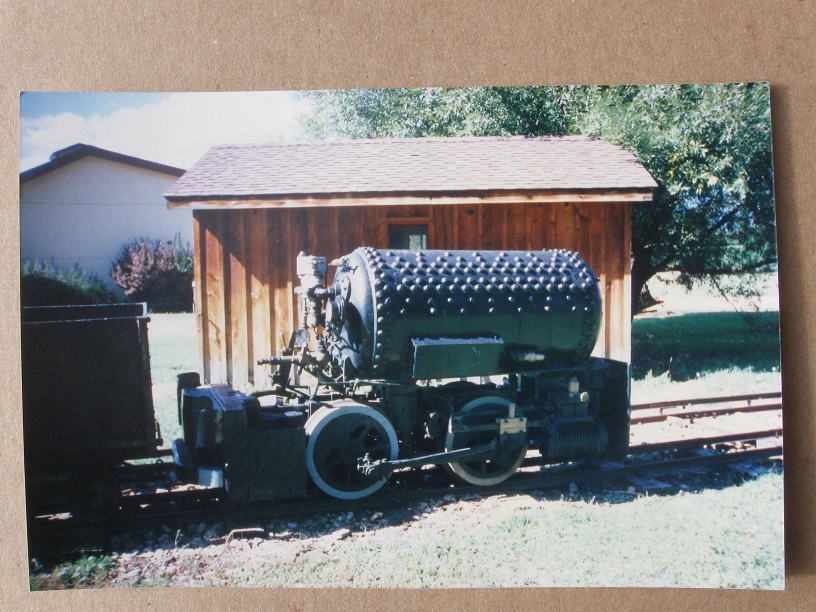 and inside the Lead S.D. Mining Museum. 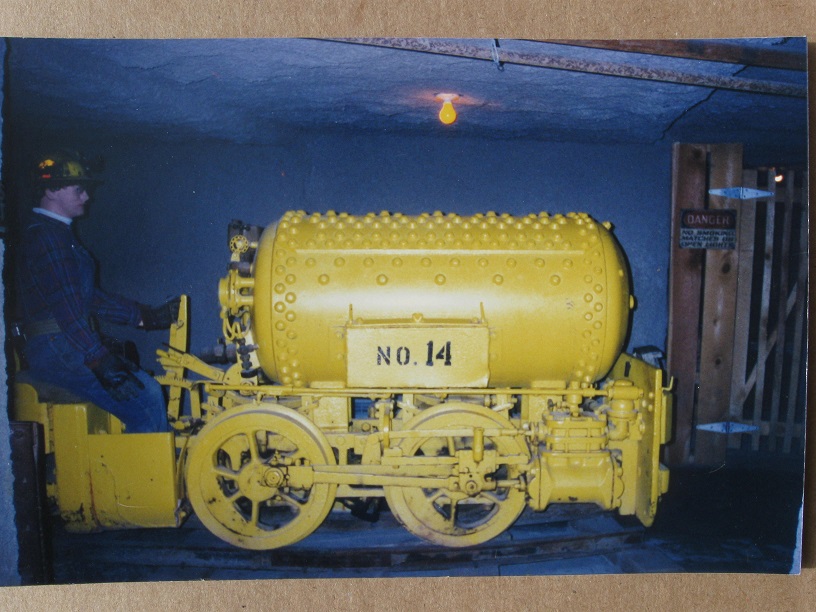 Homestake Mining long tank Porter at Butte's World Mining Museum. 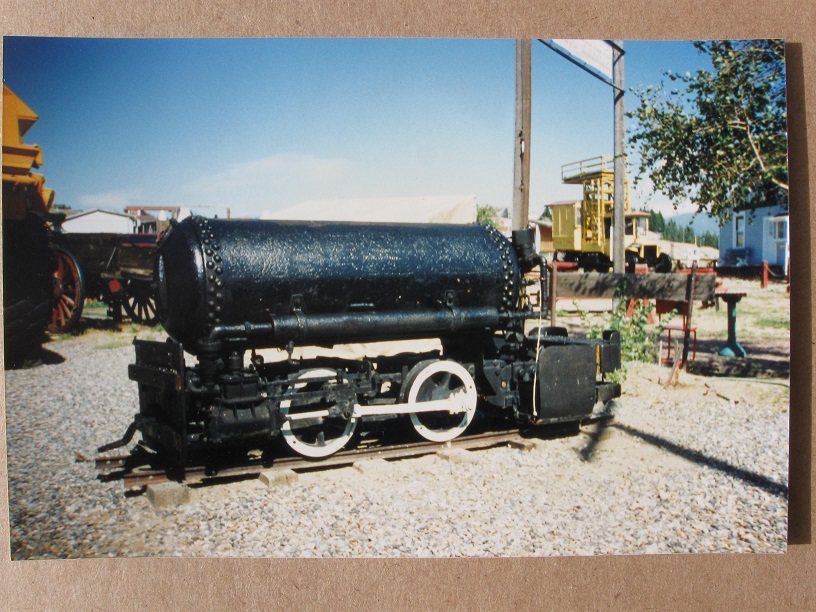 Small Air-Motor at the Western Mining Museum Colorado Springs(a description was next to it but I didn't read). 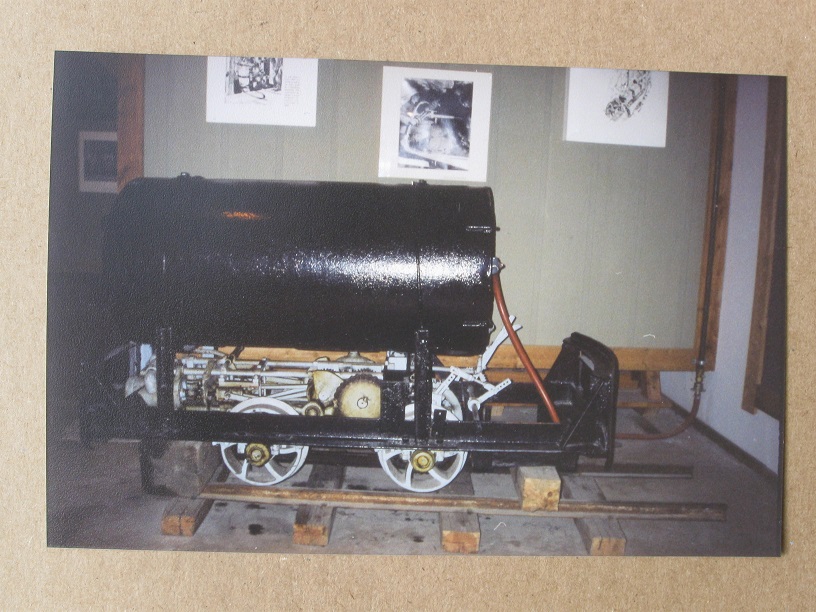
UpSideDownC
in New Zealand |
Re: Compressed air mining locomotives
|
As promised...
EIMCO modern at the Drift being reopened opposite the Phoenix Gold Mine Tour. 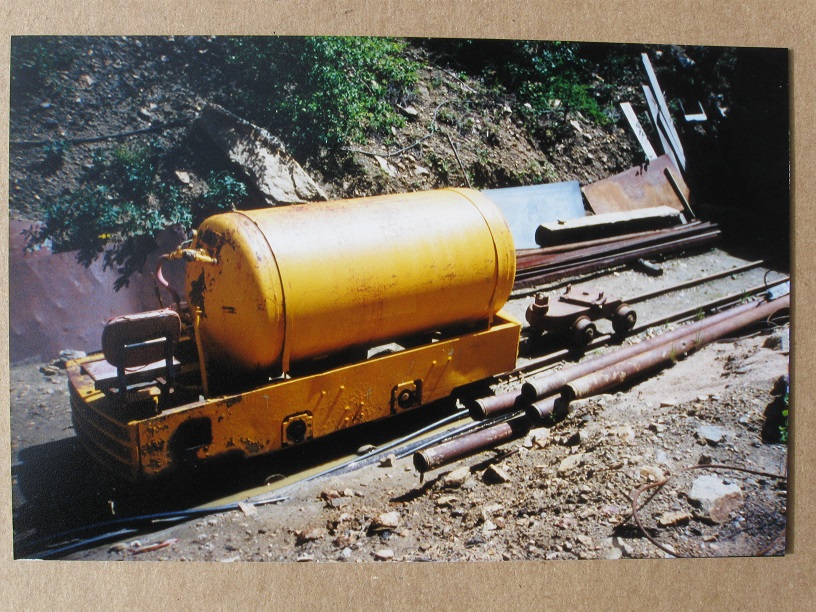  They also had this Tramaire version there as well. 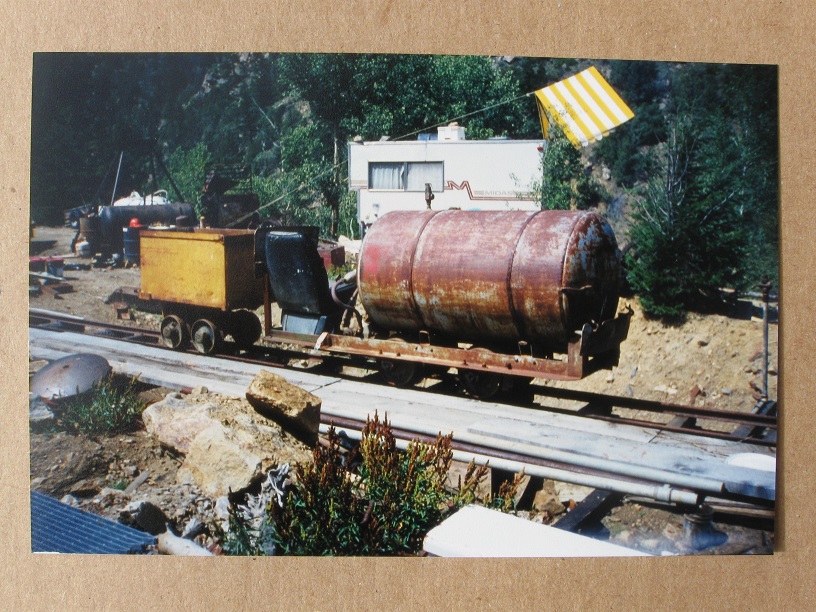
UpSideDownC
in New Zealand |
Re: Battery-Electric mining locomotives. Mancha Type A.
|
In reply to this post by Jim Courtney
I'll try to get the Air-Motor dusted off and posed asap. btw it is 1" scale but was gauged to run on 45mm track. One of those compliance thingy's, you know. Once I had built that model, then there was nothing left to do but go whole hog in the up-size department.
My Tram has a replica Mancha A type Battery-Electric that I built with a few improvements such as a cab over-ride plate(from the later all welded B-type) added, a revised rear headlight location(under the seat to avoid damage), a castiron tractor seat in place of the barstool type and a warning Gong added as per the Mancha A at the Copper Queen Tour. Gongs were on the B-types, not certain if any were on the A. The later style of Wheel was cheaper to have cast here and the original style of cab sideframes were applied. I still need to reduce the height of the Isolation Switchbox lid, needs a 1" slice cutout, and wire in the recharge Cables. The power is ex-Forklift 24V with double reduction Chaindrive in place of the Mancha's 48V Motor and wormdrive integral gearboxes. I currently have 2 x 152amp/hr 12V batteries, the prototype had 720 amp/hr cells. The Batterybox rolls off if needed and the Cab can be swung up to fit on a cage, allowed dropping down the shaft, just like Robert Mancha intended back in 1927. 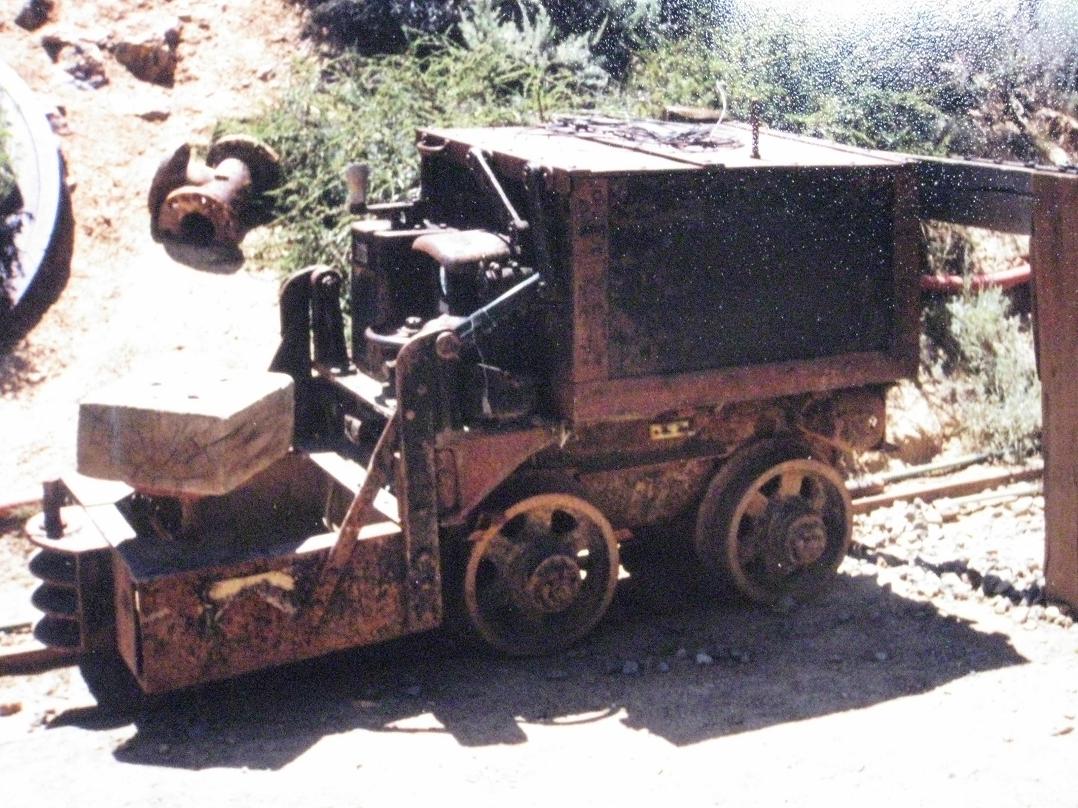 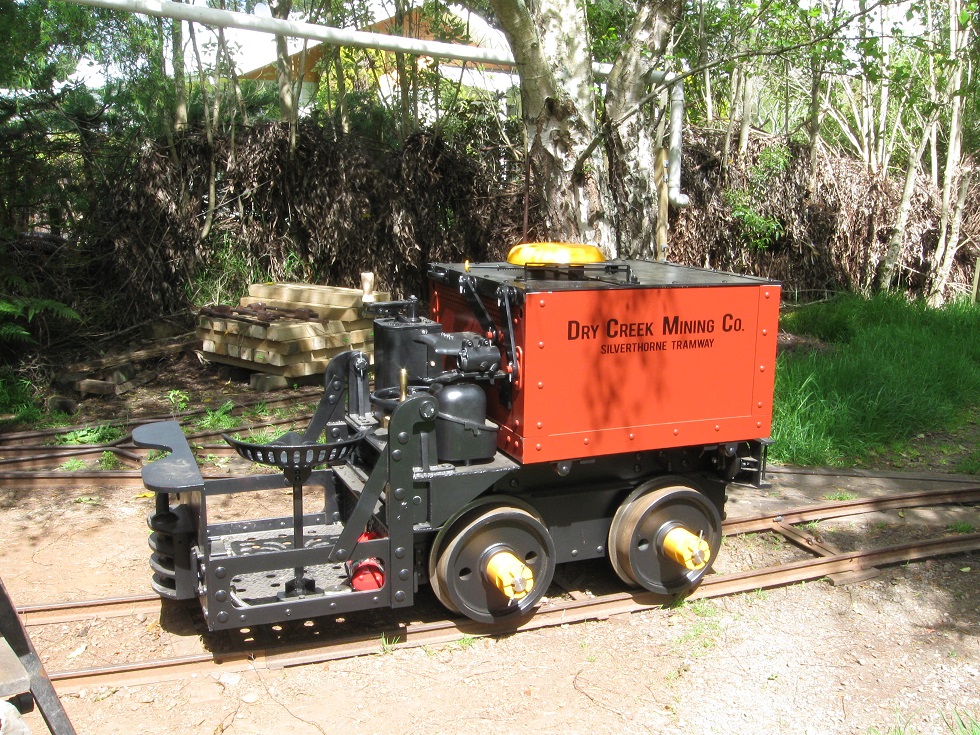 So far it has hauled 16 whole trees, and the resulting mess of firewood split from them, and also 200 + cubic metres of spoil from the "diggings", and countless other haulage chores. Costs .35c per (weekly) recharge. Batt-Electrics are far more versatile than Air-motors, gas/diesel or Animal power and work well in my case, short infrequent runs that might be several moves over the whole day. Jim, the Goats just prefer to supervise, or snooze.  However the Doe has been known to assist in pushing a loaded car on occasion, and did once pushstart one off downgrade. Because(I guess), she knew she could. However the Doe has been known to assist in pushing a loaded car on occasion, and did once pushstart one off downgrade. Because(I guess), she knew she could.
UpSideDownC
in New Zealand |
|
Other Homestake loco pics
 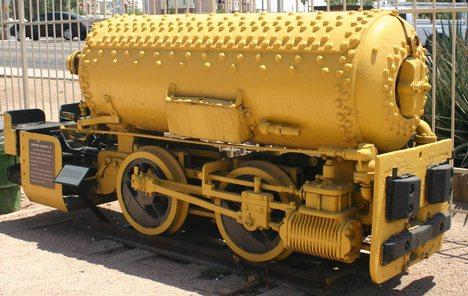 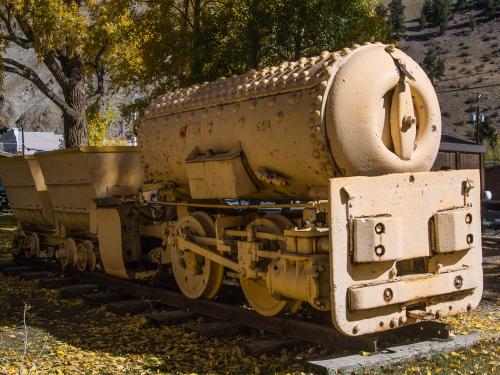 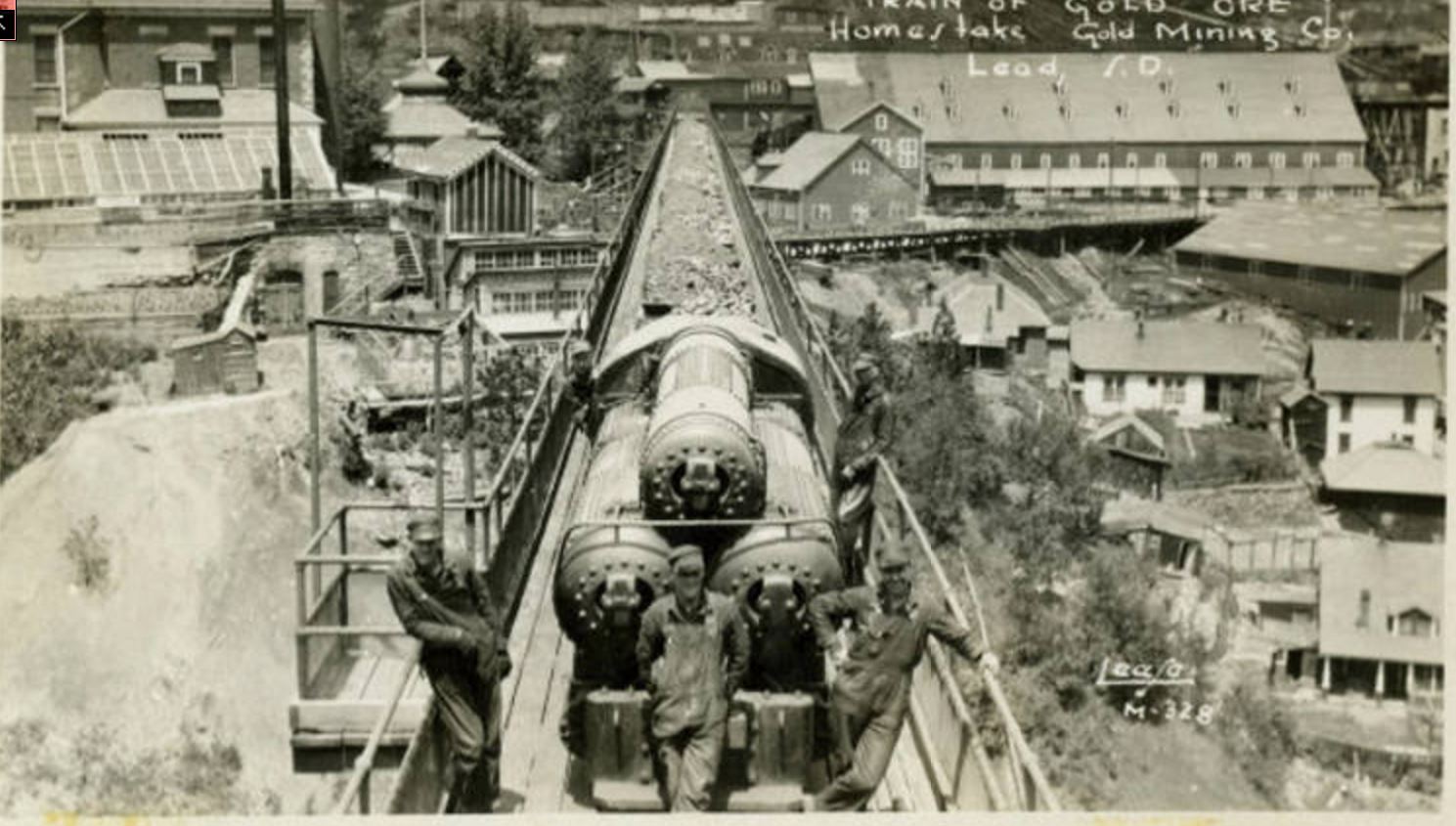 
|
|
A couple more of the 9
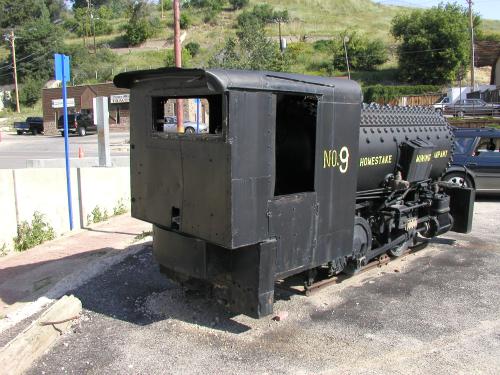 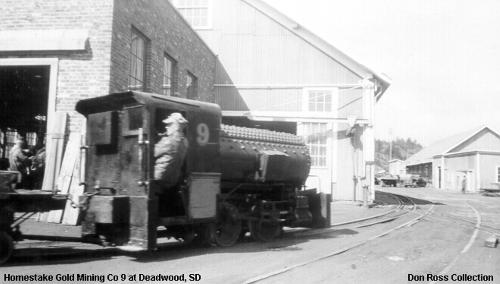
|
Re: Battery-Electric mining locomotives. Mancha Type A.
|
This post was updated on .
In reply to this post by Chris Walker
My friend, Dale Kreutzer, has spent much of the summer building the extensive coal mining complex at Porter, Colorado, for his Sn3 RGS layout set in 1925:
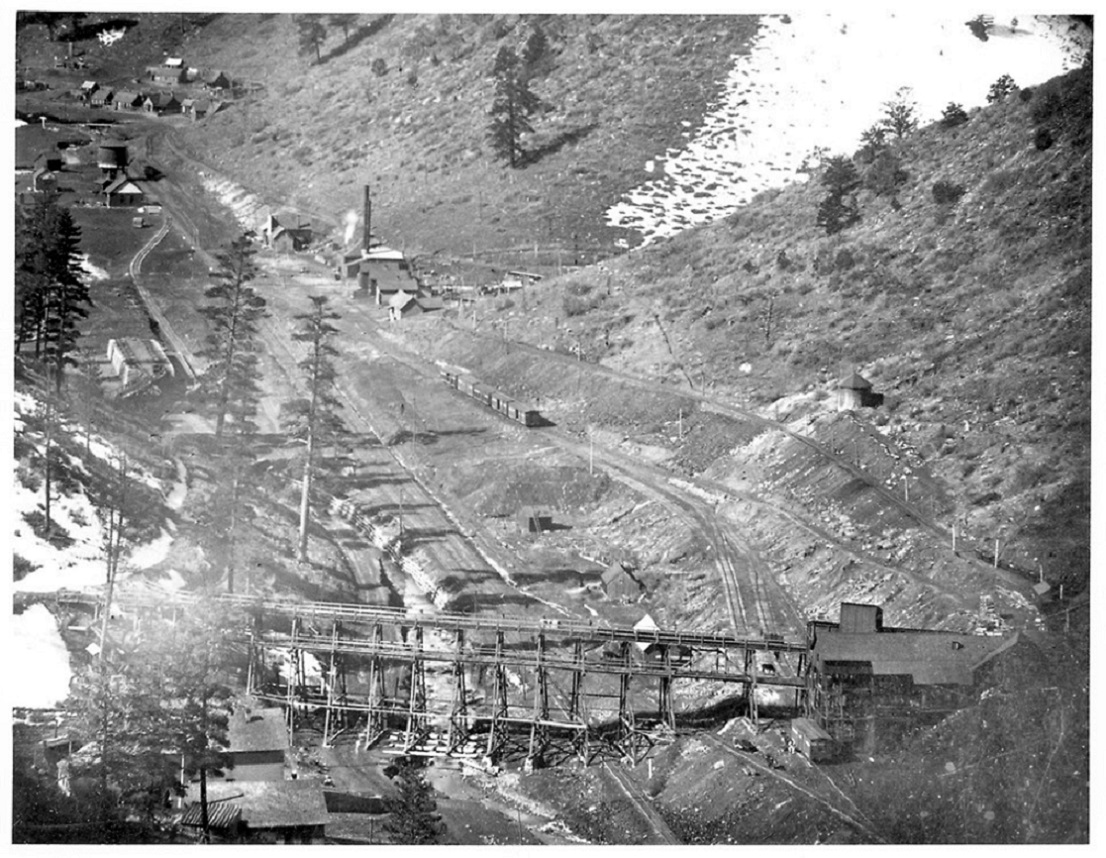 The mine exploited coal seams on both the north and south sides of the valley. A tramway crossed over the RGS tracks on a high trestle to reach the operations on the south side (visible above and below at the left frame). 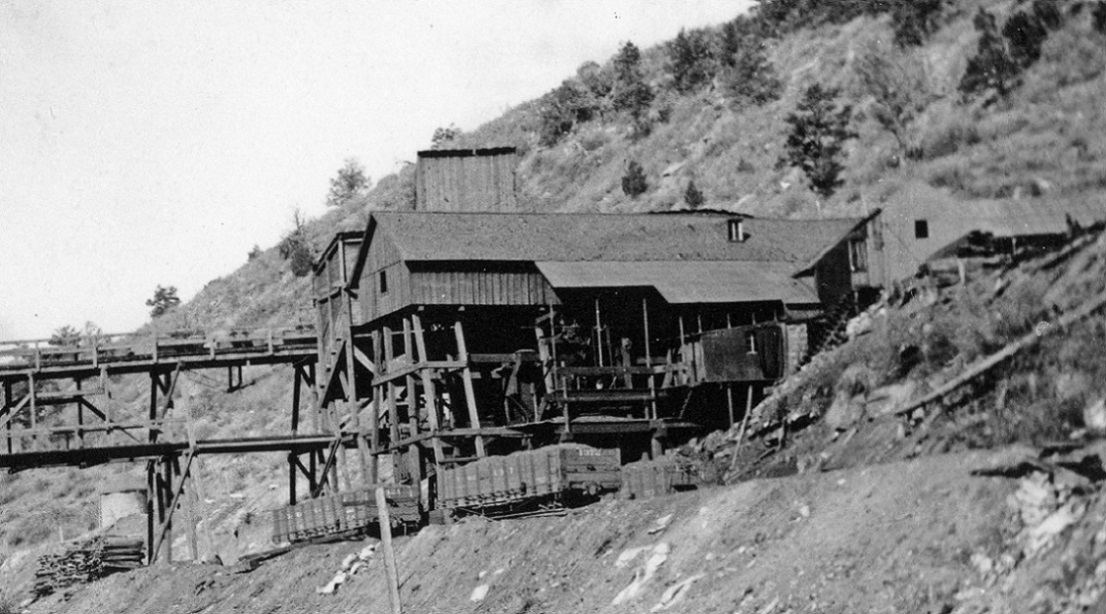 Dale needed a compressed air locomotive to move tram cars of coal and debris back and forth. He converted this HO scale Shapeways print:  Into this freelanced CA locomotive: 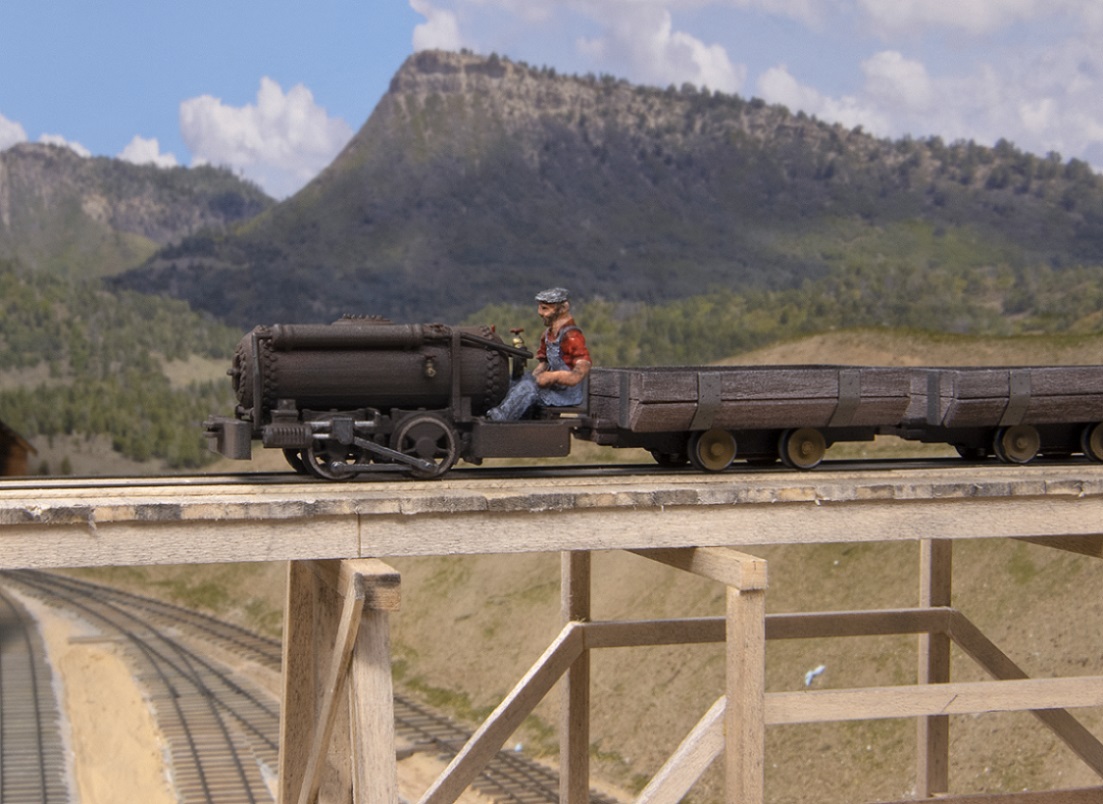 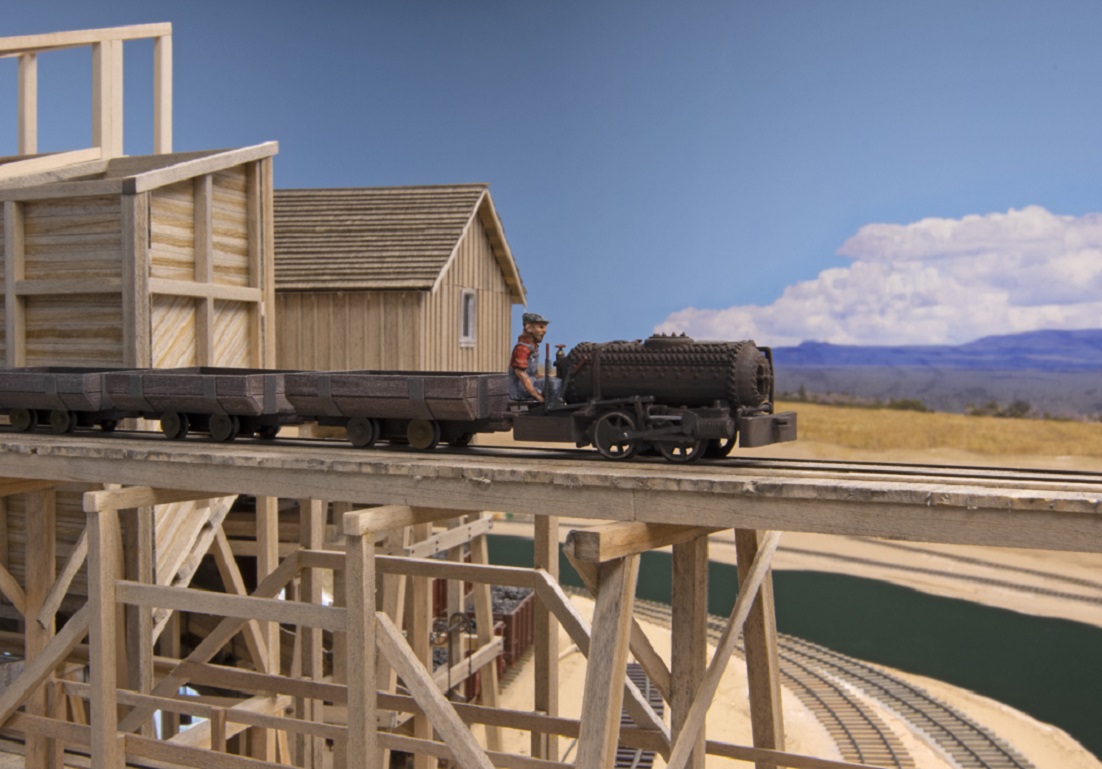 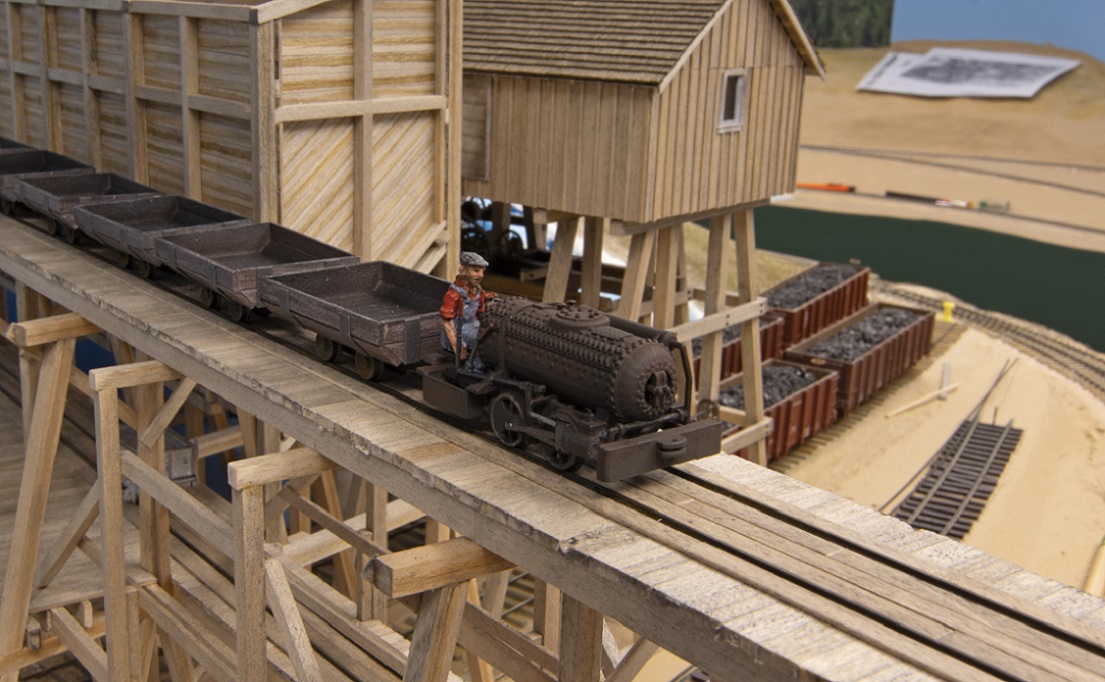 The tram cars are converted BTS kits. The information shared on this thread was of help to Dale in completing his conversion. Thanks to all . . . 
Jim Courtney
Poulsbo, WA |
Re: Battery-Electric mining locomotives. Mancha Type A.
|
Jim
The last photo of the Porter Mine has cars D&RG 1421? and 1372, both drop bottoms from the build in 1902. The cars are as built with two exceptions. 1372 has lost its 2nd and 4th U-bolts designed to keep the sides from buldging. By this time it had been demonstrated that these did not function as designed, and were not replaced when broken. The operating rod for the bottom bottom dump mechanism has been moved up from even with the bottom of the side sill to the middle of the sill as opposed to top of the stake pocket as shown in the drawing for modification. There is additional discussion on this in Rhine's Rio Grans High-Side Gondolas. The photo dates before April 1913, when 1372 received its USSAS. Pat |
«
Return to C&Sng Discussion Forum
|
1 view|%1 views
| Free forum by Nabble | Edit this page |

